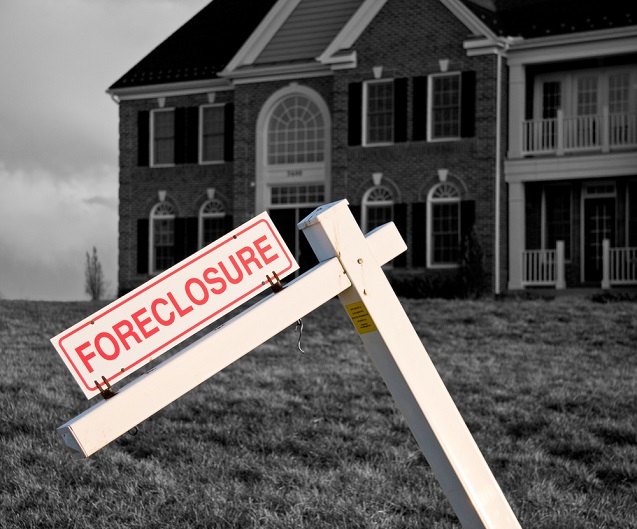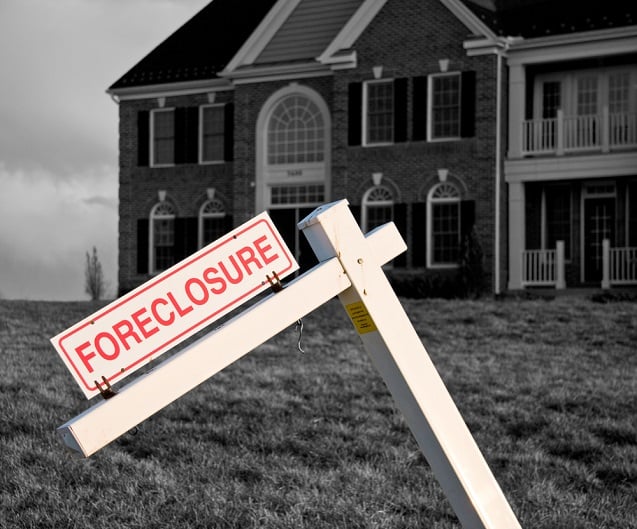
 via Shutterstock )” width=”637″ height=”529″ />(Image: via Shutterstock).
via Shutterstock )” width=”637″ height=”529″ />(Image: via Shutterstock).
Many economists and business writers view the duration and severity of the downturn as being a mystery. They argue that it has something to do with the financial crisis, although the exact nature of the relationship is often not quite clear, with the financial crisis looming as a dark cloud hanging over the head of an otherwise healthy economy.
Fortunately, for arithmetic fans the story was never very difficult. In the last business cycle the economy was being driven in large part by a housing bubble. The unprecedented run-up in nationwide house prices lead to booms in both residential construction and consumption.
This was easy to see even before the bubble burst and should be completely apparent to everyone now. In the 1980s and 1990s before the bubble began to drive the housing market, residential construction accounted for an average of less than 4.4 percent of GDP. At the peak of the bubble driven building boom in 2005, construction rose to more than 6.5 percent of GDP.
The extraordinary rate of construction in the bubble years led to enormous overbuilding which manifest itself most clearly in a record vacancy rate. When the bubble burst construction plummeted to well below normal levels. After several years of below normal construction the vacancy rate has fallen, although it is still at an unusually high level.
The whittling away at the backlog of excess housing has allowed for a recovery in construction. It is now just under 3.1 percent of GDP. Given pre-bubble trends there is some room for further recovery, but it is unlikely to provide much additional boost to the economy from current levels.
Barring another bubble, residential construction will only add a bit more than 1.0 percentage point to GDP as it recovers further. This is helpful, but in an economy that it still 6.0 percentage points (@ $1,000 billion in annual output) below its potential, it will not go far towards getting us back to full employment.
The other route through which the housing bubble was driving the economy was consumption. The $8 trillion in equity created by the housing bubble made homeowners feel wealthier. They consumed based on this wealth, believing that it would be there for them to draw on for their children’s education, their own retirement or for other needs.
When the bubble burst, homeowners cut back their consumption since this wealth no longer existed. However contrary to what you often read in the paper, consumption is not currently low, it is actually quite high when compared to any time except the years of the stock and housing bubbles.
In the decades of the sixties, seventies, and eighties, people on average consumed less than 90 percent of their after-tax income, meaning that the saving rate was over 10 percent. The share of income going to consumption rose sharply in the 1990s due to the stock bubble and then even more in the last decade due to the housing bubble. Consumption peaked at more than 97 percent of income in 2005.
The consumption share fell during the downturn, but it has inched back up so that consumers are again spending almost 96 percent of their income, implying a saving rate of just over 4 percent. While this rate of spending is not as high as the bubble peaks of the last two decades, it is far higher than in the decades preceding the bubbles.
There is no reason to expect the consumption share of income to go still higher. In other words, the idea that people will just get over their pessimism and spend a lot more money is silly. People have the same need to save for retirement and other purposes as they always did. Going forward it is at least as likely that the share of income going to consumption will fall as rise. We have lost the bubble wealth that was driving consumption before the crash; we will not get back to bubble levels of consumption without another bubble.
If it is unreasonable to expect a bounce back in either housing or consumption, then what about investment? Here too the optimists flunk the arithmetic test. The problem is that investment has already pretty much returned to its pre-bubble shares of output. In the most recent quarter investment was 12.2 percent of GDP. This compares to an average share of 12.4 percent in the prior business cycle. While there is some room for an increase in the investment share of GDP as the economy recovers further, there is no basis for expecting any big surge.
There is one last place to look for private sector demand: the secret place that the business press agrees never to mention. That would be net exports. Currently our net exports are negative, meaning that we import more than we export to the tune of more than $500 billion a year or 3.0 percent of GDP.
This deficit, which was considerably larger before the crash, has created an enormous hole in demand since it means that income being generated in the United States is not being spent in the United States. The hole in demand was filled in the 1990s by the demand generated by the stock bubble. It was filled in the last decade by the demand generated by the housing bubble. Without a bubble, there is nothing to fill this hole.
If we could get trade close to balanced it would raise output to near full employment. We can assume that the gain to GDP will be roughly 1.5 times the increase in net exports, so that an increase in net exports equal to 3.0 percentage points of GDP will raise output by 4.5 percentage points of GDP, filling most of the gap between potential GDP and actual GDP.
There also is an easy way to boost net exports, get the value of the dollar down against other currencies. This makes U.S. goods more competitive in world markets, leading to an increase in exports and a drop in imports.
However a lower valued dollar is not even an item on the national agenda. Instead we get over-hyped trade deals that are mostly about giving corporations more protection against environmental and safety regulations, and increasing protections in the pharmaceutical and software sectors. The potential gains from these deals are trivial even by their proponents’ own estimates.
So there you have it. A long and severe downturn that was entirely predictable. There is no mystery about the downturn or the potential routes to recovery. The only problem is that the people in control of economic policy have no interest in taking the steps necessary to bring the economy back to full employment. And most of the people who write about the economy are doing their best to say that it is all just so mysterious since it is far too simple for them to understand. Happy 5th anniversary!
We’re not backing down in the face of Trump’s threats.
As Donald Trump is inaugurated a second time, independent media organizations are faced with urgent mandates: Tell the truth more loudly than ever before. Do that work even as our standard modes of distribution (such as social media platforms) are being manipulated and curtailed by forces of fascist repression and ruthless capitalism. Do that work even as journalism and journalists face targeted attacks, including from the government itself. And do that work in community, never forgetting that we’re not shouting into a faceless void – we’re reaching out to real people amid a life-threatening political climate.
Our task is formidable, and it requires us to ground ourselves in our principles, remind ourselves of our utility, dig in and commit.
As a dizzying number of corporate news organizations – either through need or greed – rush to implement new ways to further monetize their content, and others acquiesce to Trump’s wishes, now is a time for movement media-makers to double down on community-first models.
At Truthout, we are reaffirming our commitments on this front: We won’t run ads or have a paywall because we believe that everyone should have access to information, and that access should exist without barriers and free of distractions from craven corporate interests. We recognize the implications for democracy when information-seekers click a link only to find the article trapped behind a paywall or buried on a page with dozens of invasive ads. The laws of capitalism dictate an unending increase in monetization, and much of the media simply follows those laws. Truthout and many of our peers are dedicating ourselves to following other paths – a commitment which feels vital in a moment when corporations are evermore overtly embedded in government.
Over 80 percent of Truthout‘s funding comes from small individual donations from our community of readers, and the remaining 20 percent comes from a handful of social justice-oriented foundations. Over a third of our total budget is supported by recurring monthly donors, many of whom give because they want to help us keep Truthout barrier-free for everyone.
You can help by giving today. Whether you can make a small monthly donation or a larger gift, Truthout only works with your support.